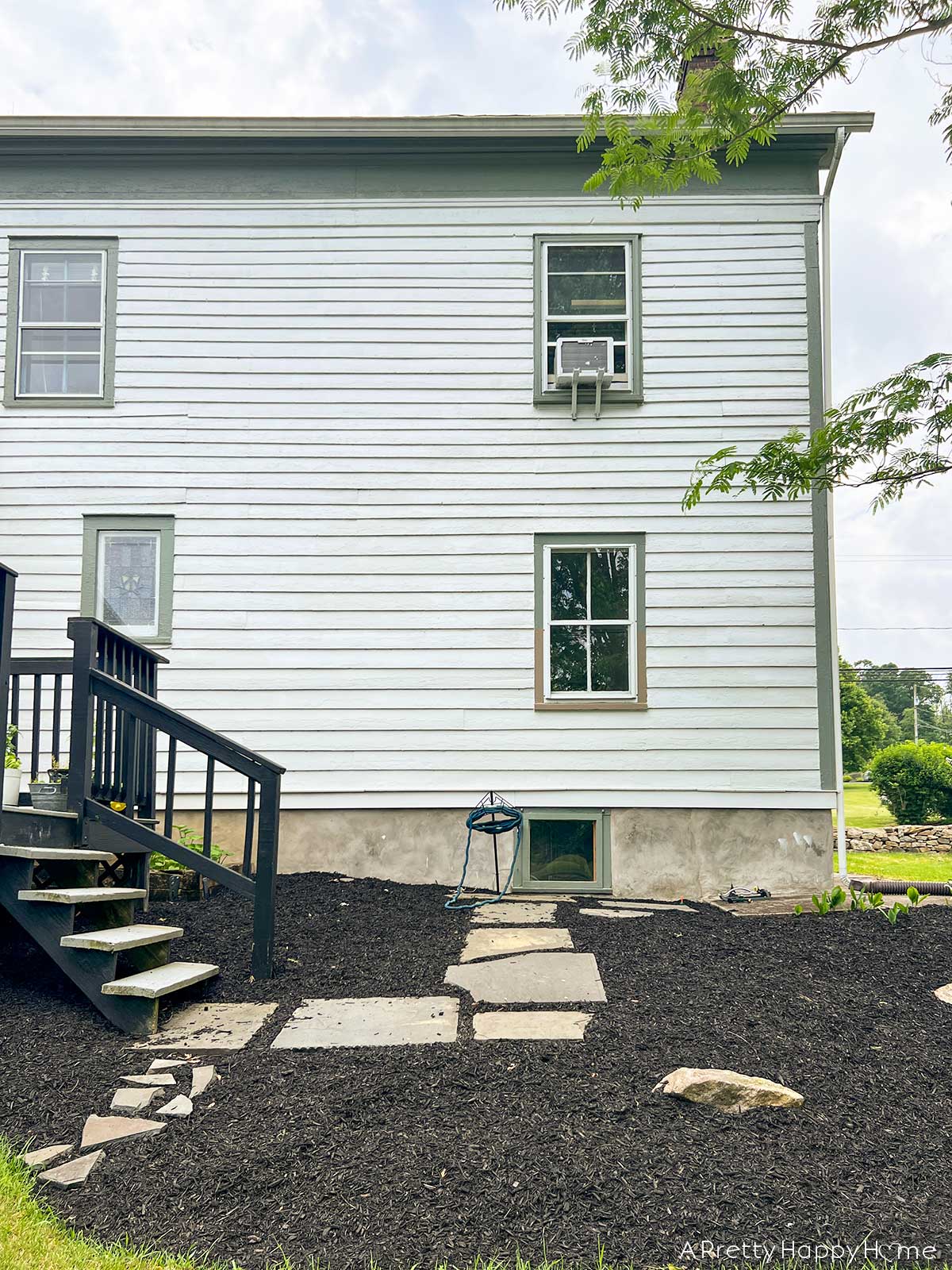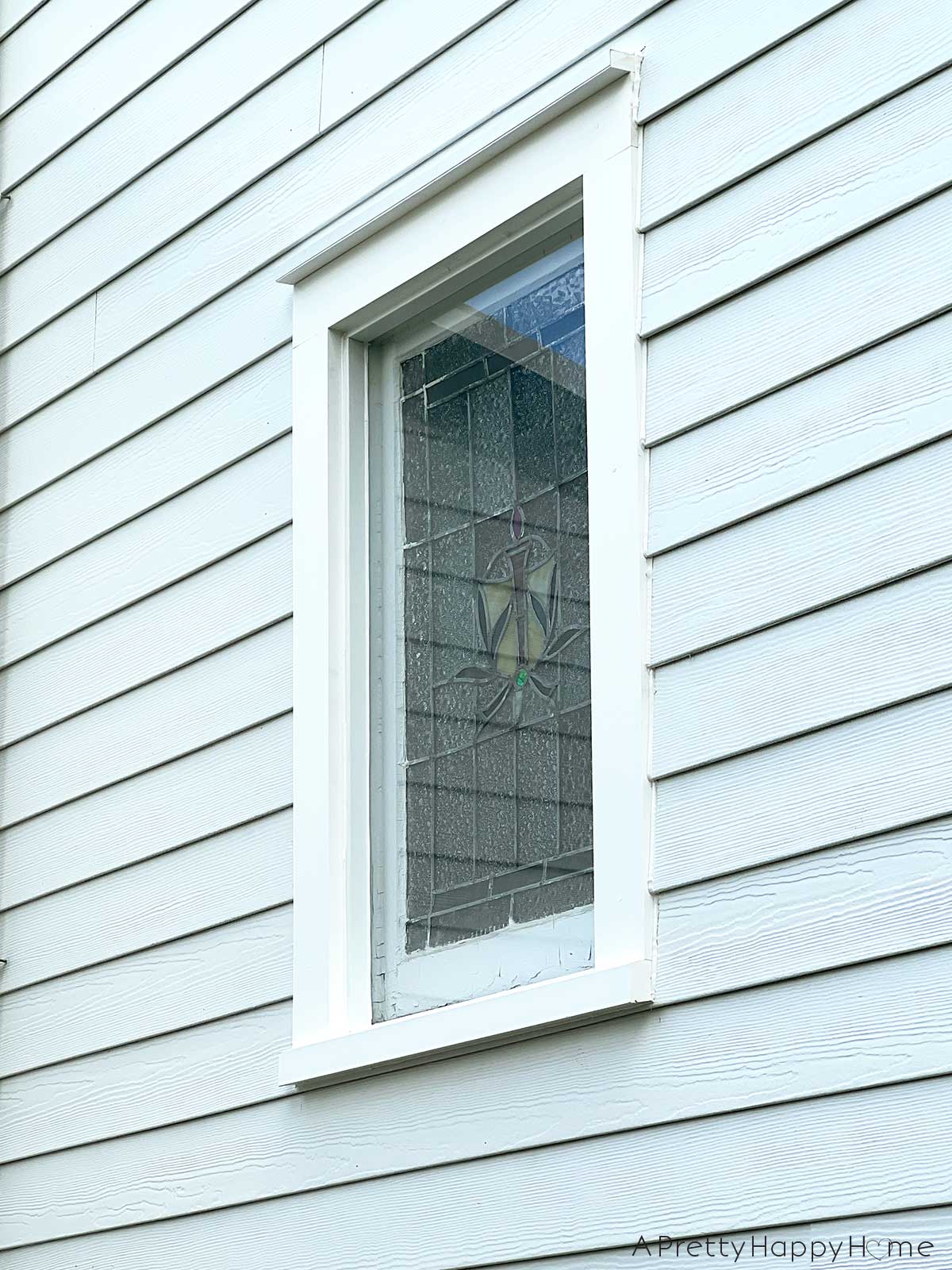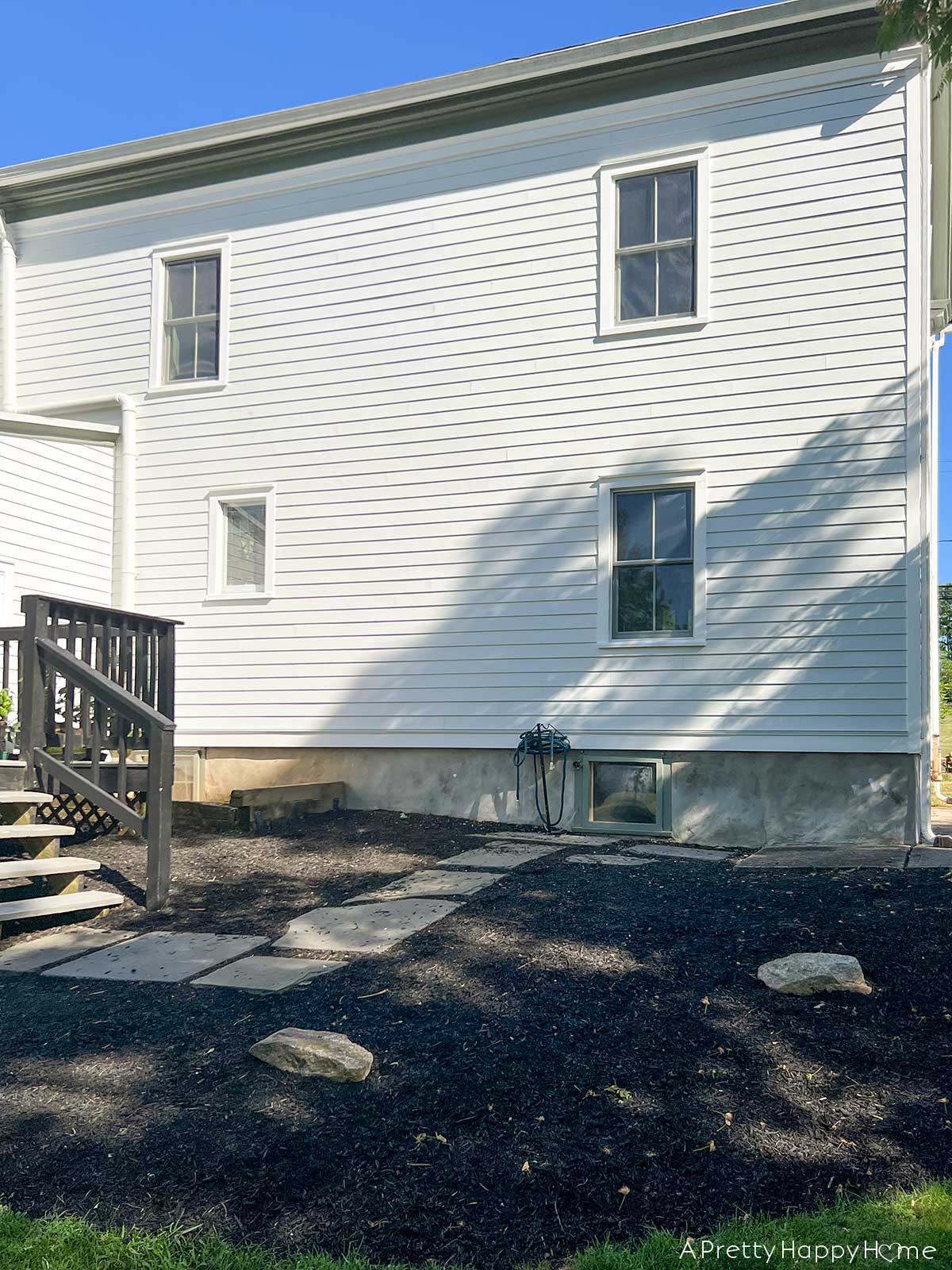
Saving a Historic Window Drip Edge Detail
When we had the rotten siding on our colonial farmhouse replaced, the window trim needed replacing too and I was adamant about saving the historic window drip edge detail.
It was not a necessary component of the window trim but it was part of the home’s character.
I just didn’t realize this decision would cause a bit of drama later.
To be clear, we were not able to save the actual boards that made this historic window drip edge detail. They had served their purpose and helped direct water away from the house for decades. Decades! And it showed in how the wood had rotted.
Some of our windows already had this historic window drip edge detail stripped away at some point in the past. It was probably in the 1960s when “new” windows were installed. It was the “dare to bare” decade after all, so maybe that went for window trim too.
You can see in the below picture how the bottom two windows and the upper left window have the drip edge detail we wanted to preserve. The upper right window with the air conditioner had the detail stripped away. In fact, that trim is completely different from the rest.
Fast forward sixty years and construction techniques have improved or, if you’re feeling feisty and don’t think everything is an improvement, we’ll call them changed.
A drip edge is also called a drip cap in these modern times we live in.
It is no longer a piece of wood jutting out above the window to direct water away from the house. It is an L-shaped piece of metal flashing. Depending on how your siding and trim is installed, it can be right above the window or it can be right above the window trim. Either way, the point is that this metal flashing does not rot and it directs water away from your house.
This is very important. You want this metal flashing. I want this metal flashing.
I also wanted to keep my historic window drip edge detail and bring it back to life on the windows where it had been lost.
“But you don’t need it. There’s metal flashing.”
I heard that phrase more than once.
“I know. But I want it. I contracted for it. Thank you for making it happen.”
I said those phrases or something like that more than once.
Advocating for one’s house is a full-time job some days! Totally worth it though.
To recreate the historic look of our window trim, we have 5 pieces of window trim and L-shaped metal flashing. You can see them in the below photo.
There are 1x4s around the sides and top of the window, a sloped window sill, and a 1×4 ripped down to make the historic drip edge detail that sits on top of the window trim. It juts out an inch or so from the trim below it. The metal flashing sits on top of that drip edge.
You can hardly tell the metal flashing is there though because the installers did such a good job crimping it around the drip edge detail.
We can have our historic look and modern protection too. Everyone wins. But mainly the house.
This was a subtle detail that we preserved when redoing the siding on our home. I believe it is a combination of details, some subtle, some not, that gives an old home its charm and character. When you lose too many of those details, bye-bye charm and character.
Also, advocating for yourself and your home is TOUGH particularly when you’re not the expert in the situation. I get it. I want to encourage you to be really upfront with contractors about what you want from the get-go. Make it clear as day because most contractors do want you to be happy. I like to remember that we’re all on the same team.
If they know what’s important to you and agree to do that thing in writing, it makes it easier later to correct any miscommunications with the crew on the ground. Things happen when multiple people are working on a job. You have to pay attention to what’s going on and be willing to firmly and kindly talk about what was agreed upon even if it makes your armpits sweaty. After all, you’re the one who has to look at your house for the next 50 years.
I am so happy with how our windows turned out. Our contractors were the absolute best of the best. I have never met a group of individuals who were so talented and hardworking. I appreciated them working through all the little details with me to get things just how I envisioned.
What do you think about the character of old homes? Do you have opinions on window drip edges? How about working with contractors? Let me know. Please leave a comment on this blog post, email us here, or reach out via Instagram or Facebook.
P.S. If you need a siding or window contractor in central New Jersey, let me know and I’ll share who we used.
Thank you for being here today. I appreciate you! If you’d like another blog post to read, you’ve come to the right place.
4 Old House Construction Techniques We Found When We Replaced Siding








